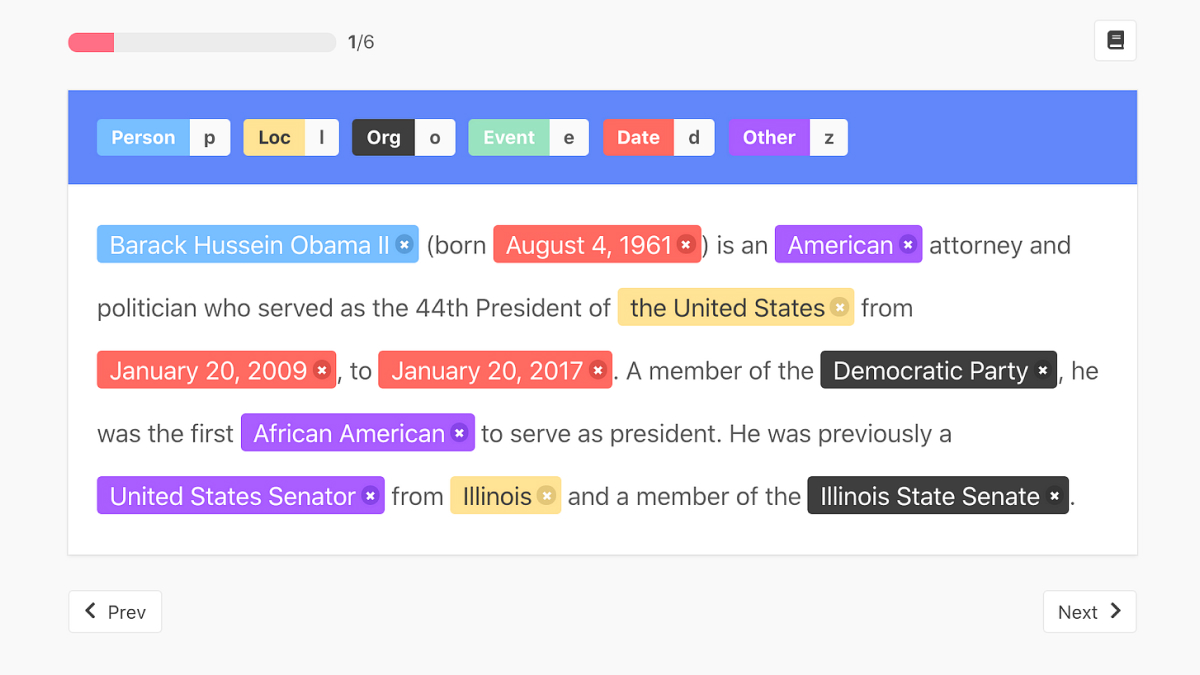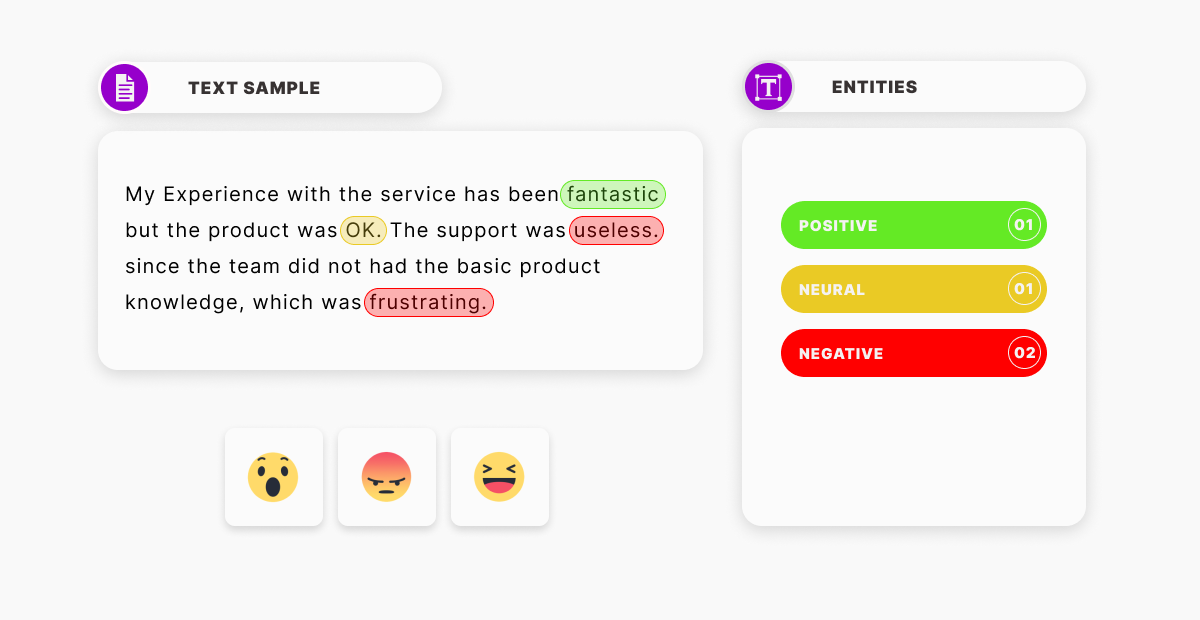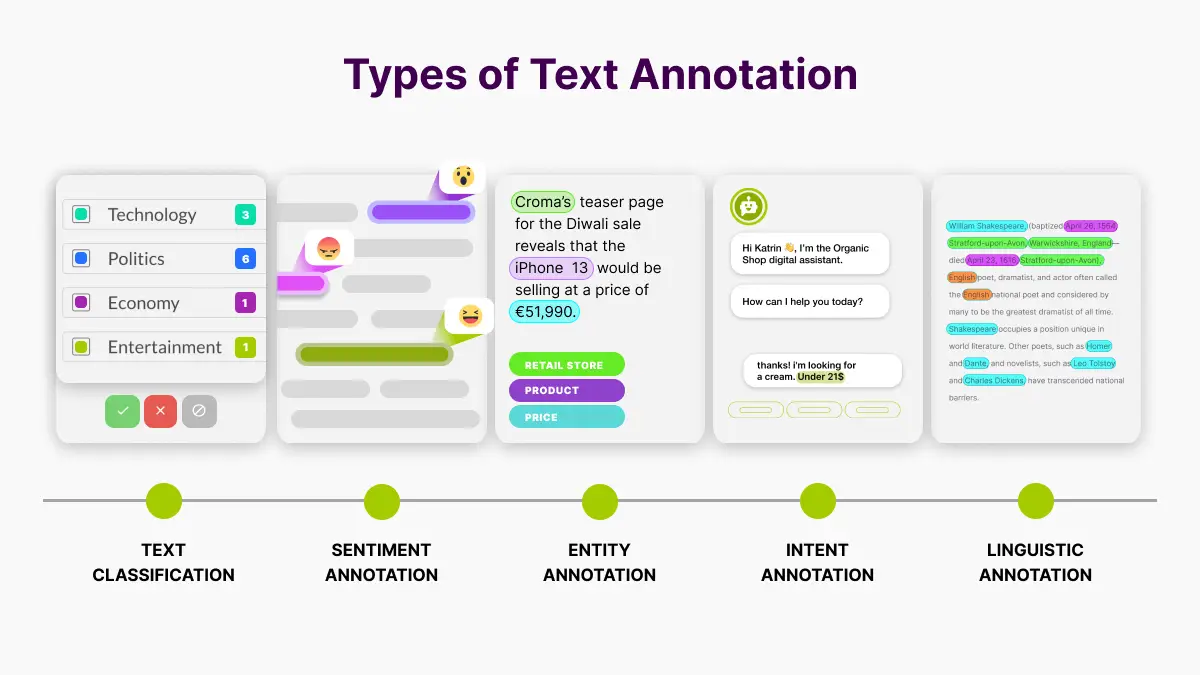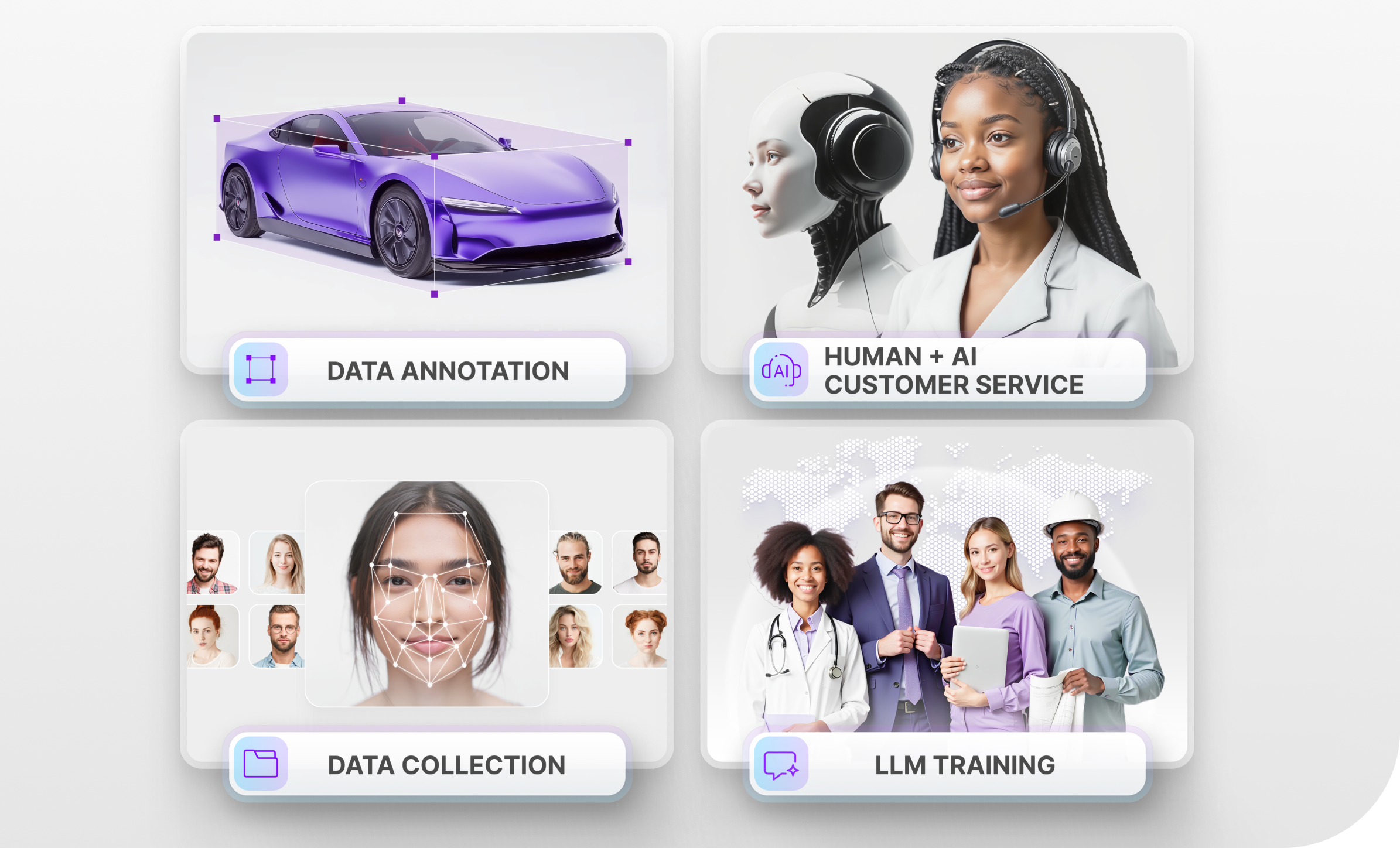A Complete Guide to Text Annotation
We engage with a variety of media on a daily basis, including Text, audio, images, and video. Our brains interpret the information we consume and use it to guide our actions. Text, which comprises the languages we speak, is among the most widely used media formats. Text annotation must be done accurately and thoroughly because it is so frequently utilized. Machine learning (ML) teaches computers how to read, comprehend, evaluate, and create Text in a way that is useful for communicating with people through technology.
Since text annotation is so important, we created this annotation guide to help you better plan and actualize your text annotation project.
What is Text Annotation?

Large volumes of annotated data are used by algorithms as part of a larger data labeling procedure to train AI models. A metadata tag is used to mark up a dataset’s attributes during the annotation process. When Text is annotated, tags highlighting certain criteria—like keywords, phrases, or sentences—are included in the data. In some uses, text annotation can also involve labeling different emotions in the Text, like “happy” or “sad,” to train the computer to understand the meaning or emotion that humans put into their words.
If an ML model is taught in accurately annotated text data, it will eventually become proficient in natural language communication. It is capable of performing the more routine and repetitive jobs that people would normally perform. This allows a business to focus on more strategic initiatives by freeing up time, money, and resources. Natural language-based AI systems have countless uses, such as AI chatbots, virtual assistants, and much more.
What Does it Mean to Annotate Text?

A text annotator will place labels on certain words or phrases in the document to allow the AI system to better understand the nature of human thought behind the words. The elements that would need to be labeled include things like proper names, key phrases, and pretty much anything the system needs to learn to understand human speech better. In many cases, the AI system also needs to understand the overall mood of the text, which can be useful for generating an appropriate response to a given prompt.
What are the Benefits of Text Annotation?
Building on what we discussed earlier, a machine learning algorithm may recognize various categories and utilize the text data annotation that corresponds to these labels to determine the normal appearance of the data within each category. This expedites the learning process and enhances the algorithm’s real-world performance.
Even though learning without labels is possible today, it can be difficult because the algorithm must understand the subtleties of the English language on its own and when the model is used in real-world scenarios. As a text annotation example, let’s take a look at sarcasm, which may be used to hide a negative phrase, which a human reader would identify right away, but an algorithm might interpret the sarcastically positive words as simply positive! In these situations, text comments and labeling are very helpful.
What is Annotated Text Used For?

There are many text annotation applications. Some text annotation examples include:
- Optical Character Recognition (OCR) – This procedure creates a machine-readable text format out of an image of Text. Your computer saves the scan as an image file, for instance, if you scan a form or a receipt.
- Speech Recognition – Measures a machine’s or program’s capacity to recognize spoken words and translate them into legible text.
- Morphological Analysis – A process for locating, organizing, and examining every potential relationship present in a particular multidimensional problem complex.
- Syntactic Analysis – Defined as analysis that tells us the logical meaning of certain given sentences or parts of those sentences.
Higher-level applications of natural language processing – This combines computational linguistics, machine learning, and deep learning models to process human language.
What are Some Types of Annotation Styles?

There are many different styles of text annotation. These include:
- Text Classification – Text classification, also referred to as document classification or text categorization, assigns annotators the responsibility of interpreting long or brief text passages. The material must be examined by annotators in order to identify its subject, intent, and sentiment before being categorized using a predefined list of criteria.
- Sentiment Annotation – textual categorization according to the mood, opinion, or emotion it contains.
- Entity Annotation – When creating training datasets for chatbots and other natural language processing applications, entity annotation is a crucial step. Finding, extracting, and tagging textual entities is what it entails.
- Intent Annotation – With intent annotation, a text’s need or want is analyzed and categorized into many groups, including affirmation, command, and request.
- Linguistic Annotation – The annotation of linguistic details, such as phonetics and semantics, in a document or speech is known as linguistic annotation. Understanding the content’s phonetics and language is aided by this annotation.
How is Text Annotated?
The final part of the annotation guidelines will tell you about how the Text is annotated. The following questions need to be accounted for during this stage:
- What are Annotation Guidelines? – Text annotation guidelines are a collection of recommendations and criteria that serve as a manual for annotators. It needs to be viewed by an annotator who can comprehend the modeling goal and how the labels will help achieve it. The team that will be using the annotations and is familiar with the data must establish these standards, since they specify what has to be included in the final annotations.
- Selecting a Labeling Tool – Purchasing the appropriate text annotation tools, for example, can mean the difference between a tedious and menial activity and a lengthy but effective procedure. Given text modeling’s widespread use, a wide variety of open-source labeling tools are at one’s disposal.
- Defining an Annotation Process – Organizing the data source and labeled data, outlining how to use the annotation tool and instructions, providing a step-by-step tutorial for carrying out the text annotation, specifying the format for storing and exporting the annotations, and reviewing each labeled sample are all included in designing an annotation process.
- Review and Quality Control – In addition to reviewing the labeled data in real-time, take a collective look at it once in a while to prevent generic label errors or biases in labeling that may have developed over time. In order to maintain consistency and prevent bias in interpretation—particularly in situations where sentiment or contextual interpretation is critical—it is usually customary for numerous annotators to label the same sample.
Trust Mindy Support With All of Your Text Annotation Needs
Mindy Support is a global provider of data annotation services and is trusted by Fortune 500 and GAFAM companies. With more than ten years of experience under our belt and offices and representatives in Cyprus, Ukraine, Poland, Bulgaria, India, Philippine, Egypt, Mindy Support’s team now stands strong with 2000+ professionals helping companies with their most advanced data annotation challenges.





